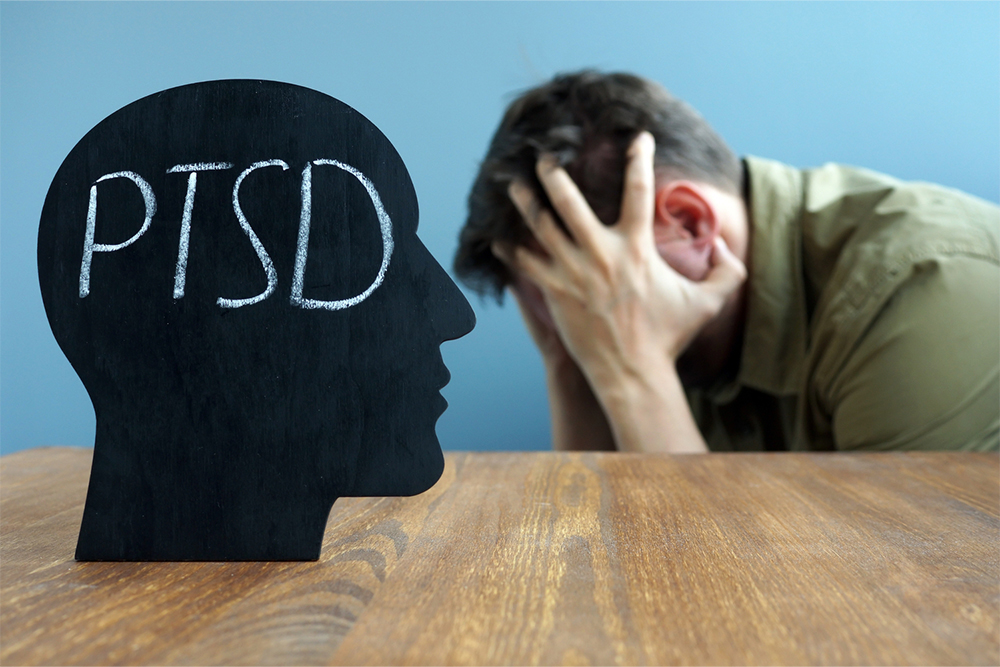4 Ways to Manage PTSD
Post-traumatic stress disorder (PTSD) is a type of anxiety disorder that develops after witnessing a stressful or threatening event or situation. This condition can trigger insomnia, flashbacks, low self-esteem, negative thoughts and beliefs, intrusive memories, avoidance, hypervigilance, emotional numbness, and other symptoms. Further, treatment for PTSD can help individuals regain control over their emotions and surroundings, address and cope with symptoms, and deal with other co-related issues that may arise.

Ways to treat PTSD
One of the main forms of treatment for PTSD for both children and adults is therapy, which helps improve symptoms, learn new coping mechanisms, and restore self-esteem.
1. Cognitive Behavioral Therapy (CBT)
This is a talking therapy that is aimed at modifying how one thinks and acts. Trauma-focused CBT helps people build coping skills using a myriad of techniques, typically taking around 8-12 weekly sessions, lasting about 60-90 minutes each. A CBT session begins with the individual describing the traumatic event in great detail. This process brings up difficult emotions and distress, which the therapist assists in identifying and managing them gradually.
As the sessions continue, one learns how to gain more control over their situation and confront difficult situations. They also review any previously drawn conclusions, such as blame or victimization. Eventually, the therapist motivates one to take up activities one may have been avoiding since the traumatic event. CBT may involve one or more techniques.
- Cognitive Processing Therapy (CPT)
Using CPT, participants learn how to modify and challenge any unhelpful thoughts they may be facing as a result of PTSD. Generally, this treatment is conducted over 12 weeks, with weekly sessions that may be 60-90 minutes long with the therapist. These sessions begin with the individual talking about their trauma and its impact on their life. They may also be asked to pen down their experiences to help them process better. This avenue opens up a new understanding and perspective of the traumatic event, which may help reduce the negative emotions related to it. - Prolonged Exposure (PE) Therapy
With PTSD, people often begin to avoid certain things, events, or situations that would bring up negative or difficult emotions. PE therapy helps challenge just that by teaching individuals to approach trauma-related memories, feelings, and situations gradually. Over time, this helps them realize that the memories and cues are not completely harmful and don’t need to be avoided. This therapy typically involves 8-15 sessions with the therapist that last around 90 minutes each.
In the early stages of the treatment, the focus is on learning breathing and calming techniques to manage anxiety and stress. As the treatment progresses, the focus shifts to things one has been avoiding and learning how to deal with them. The therapist may also prescribe homework, where one is asked to go home and listen to a recording of the session to work on managing one’s symptoms. - Stress Inoculation Training (SIT)
Another form of CBT, SIT can be performed individually or in a group. Here, the focus is not on what happened but on how to deal with the stress caused during the event. It may include learning about massage and breathing techniques to self-soothe and relax the mind and body. Individuals generally pick up these stress management skills after three months of regular weekly sessions.
2. Narrative Exposure Therapy (NET)
The goal of NET is to establish a narrative that helps one contextualize their trauma. This form of treatment is especially helpful for individuals who have faced complex or multiple traumas along with feelings of extreme emotions (also known as C-PTSD). The main focus of this type of PTSD treatment remains on talking about and through the sequence of events in chronological order to repair any negative responses along the way. Every time the narrative is explored, the therapist encourages the individual to understand and control their responses and memory. It helps one not only methodically deal with traumatic events but also understand the impact that these have had on their identity. NET sessions may be provided individually or in small groups.
3. Eye Movement Desensitization and Reprocessing (EMDR)
This is a type of PTSD remedy where the focus shifts away from talking. During these structured therapy sessions, individuals are encouraged to concentrate on their disturbing experiences as they simultaneously experience some form of bilateral stimulation, such as a moving hand, a flashing light, or a sound. Over time, this helps reduce vividness and emotions associated with traumatic memories, helping one cope better. Typically, the therapist conducts one or two sessions per week for 6-12 weeks.
4. Brief Eclectic Psychotherapy (BEP)
This form of therapy combines CBT with a psychodynamic approach and focuses on changing the emotions of guilt or shame that are often associated with distressful experiences. It has specifically been designed for those who are dealing with the distress from a single traumatic event. The treatment takes about 16 sessions, each lasting 45 minutes to an hour. Further, this PTSD remedy can be broken down into short phases.
- Session 1 – PTSD psychoeducation
- Sessions 2-6 – Imaginal Exposure (talking about the event in as much detail as possible)
- Sessions 7-14 – Restructuring (understanding how the event has affected the person and how they can learn from it)
- Session 15/16 – Ritualistic farewell (creating a relapse prevention plan)
Healing from trauma is not a linear process and can take quite some time. Along with therapy and other PTSD remedies, it is important to take care of oneself (following a nutritious food regime, exercising, focusing on resting and relaxation) and stay connected with others, such as friends, family, or even support groups.











